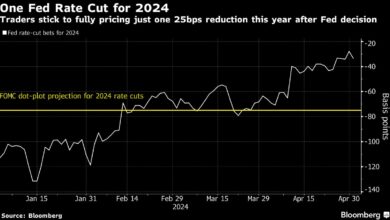Four-day weekends from home are over: Fridays are increasingly another office day, data shows


So long, four–day weekend from home—it was nice while it lasted. Now, Fridays are increasingly becoming just another office day as businesses move on from the COVID-era habit of remote working, new figures suggest.
Casual encounters by the water cooler were often seen as the casualty of working from home. So to get an idea of how many people are back in the office, look no further than water cooler companies—like, Bevi.
According to the company, 25% of Fortune 500 companies have at least one Bevi in their office, with big names like Apple, Netflix and Uber among its clients.
The Boston-based company compared usage of water dispenser machines in offices today with 2019 when most workers were based at their desk, five days a week—and it found that office attendance is at 56% of its pre-pandemic level.
While Tuesday through to Thursday are still the most popular days to show face, Fridays in the office aren’t exactly dead either.
Office attendance is at 44% of its pre-pandemic level on a Friday—not far behind Mondays, which are at 50%. Meanwhile, mid-week attendance hovers around the 67% mark.
“Our water dispensing data set makes it clear: regardless of how we feel about it, the office is a place we’re continuing to spend more and more time as March of 2020 gets further and further in the rear view,” the company wrote in its latest return-to-office report.
And the trend is transatlantic: Even across the pond in the U.K., the most recent data indicates that workspaces are getting busier on Fridays.
One of Britain’s biggest property developers, Landsec has been examining the rate of people coming into the office across its $12.8 billion property portfolio—and footfall on a Friday has just reached its highest level since 2022, the firm says.
“Whilst mid-week is undoubtedly the most popular time for people to come together, on a like-for-like basis, the amount of unique daily turnstile tap-ins at our workspaces continues to grow across the week,” the developer told Fortune.
It’s probably not out of choice
The figures come as businesses move away from fully flexible hybrid work policies.
Imagine coming into the office to reap the benefits of in-person collaboration, only to find no one else is in. That conundrum explains why businesses spent last year mandating which of their three in-office days workers should come in.
Although for the average company, this looks like Tuesday, Wednesday, and Thursday in the office with Friday a work-from-home day, a small but growing number of influential companies are bucking the trend.
Take L’Oréal. Workers at the 114-year-old French cosmetics giant have been back in the office three days per week for over a year now.
But starting this month, L’Oréal’s CEO Nicolas Hieronimus wants his 88,000-strong workforce to show face on Fridays instead of Wednesdays, at least twice a month.
Hieronimus has been clear-cut about his stance on remote workers who, in his eyes, have “absolutely no attachment, passion or creativity”. But his beef with Fridays specifically remains unclear.
Meanwhile, Deutsche Bank AG has outright banned staff from working at home on a Friday and the following Monday with the aim to “spread our presence more evenly across the week.”
But the shift won’t sit well with workers, who have sworn off ending the week at the office: With the four-day week, mid-week hybrid schedules, and Summer Fridays gaining momentum, research has consistently shown that Fridays are by far employees’ favorite day to work from home—and they’d even take a pay cut to never have to work another Friday again.
Source link




